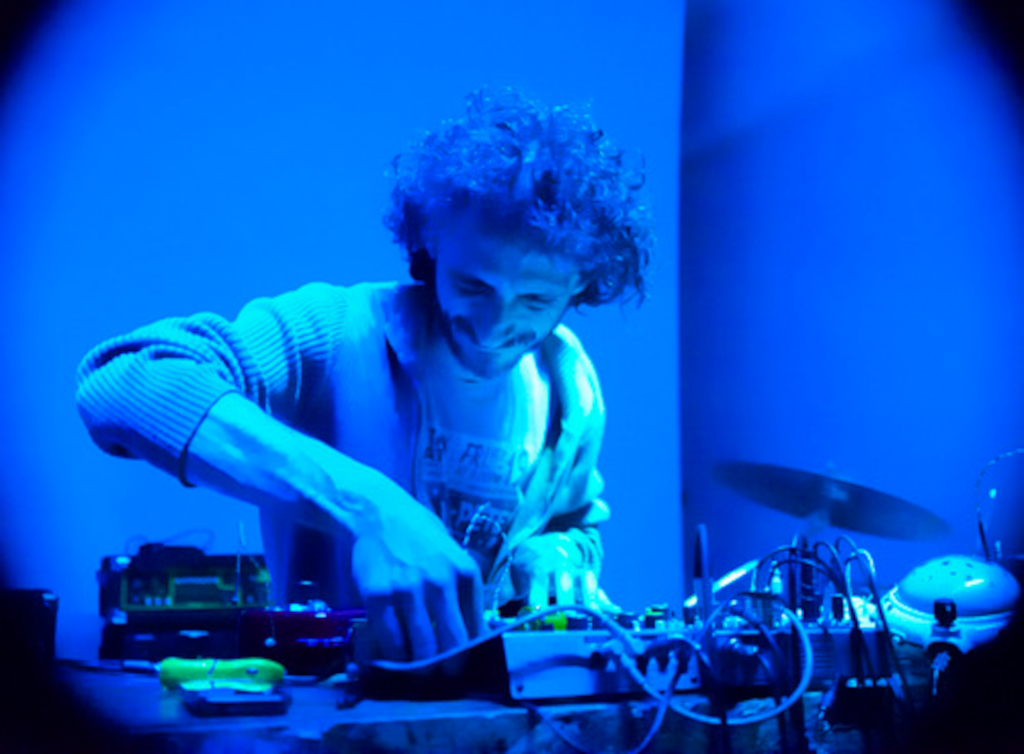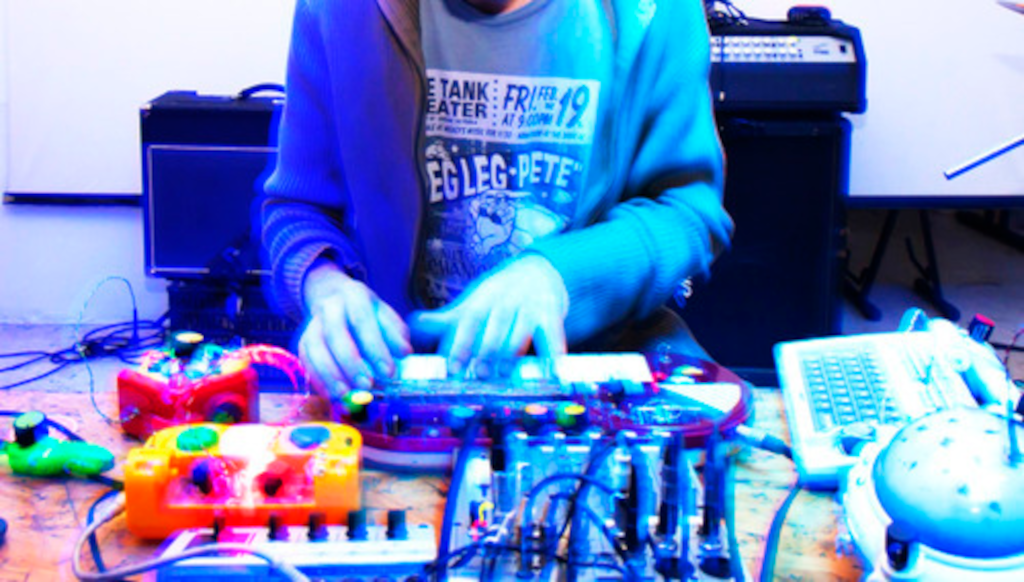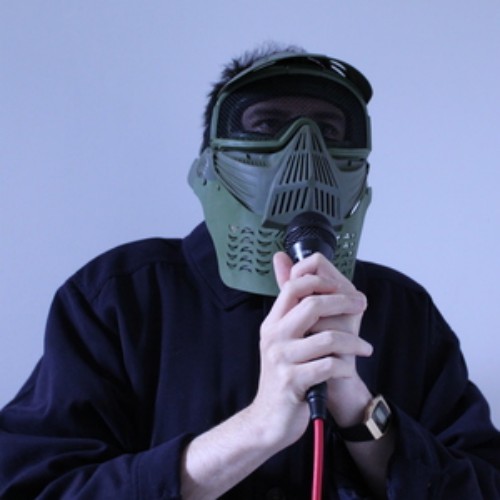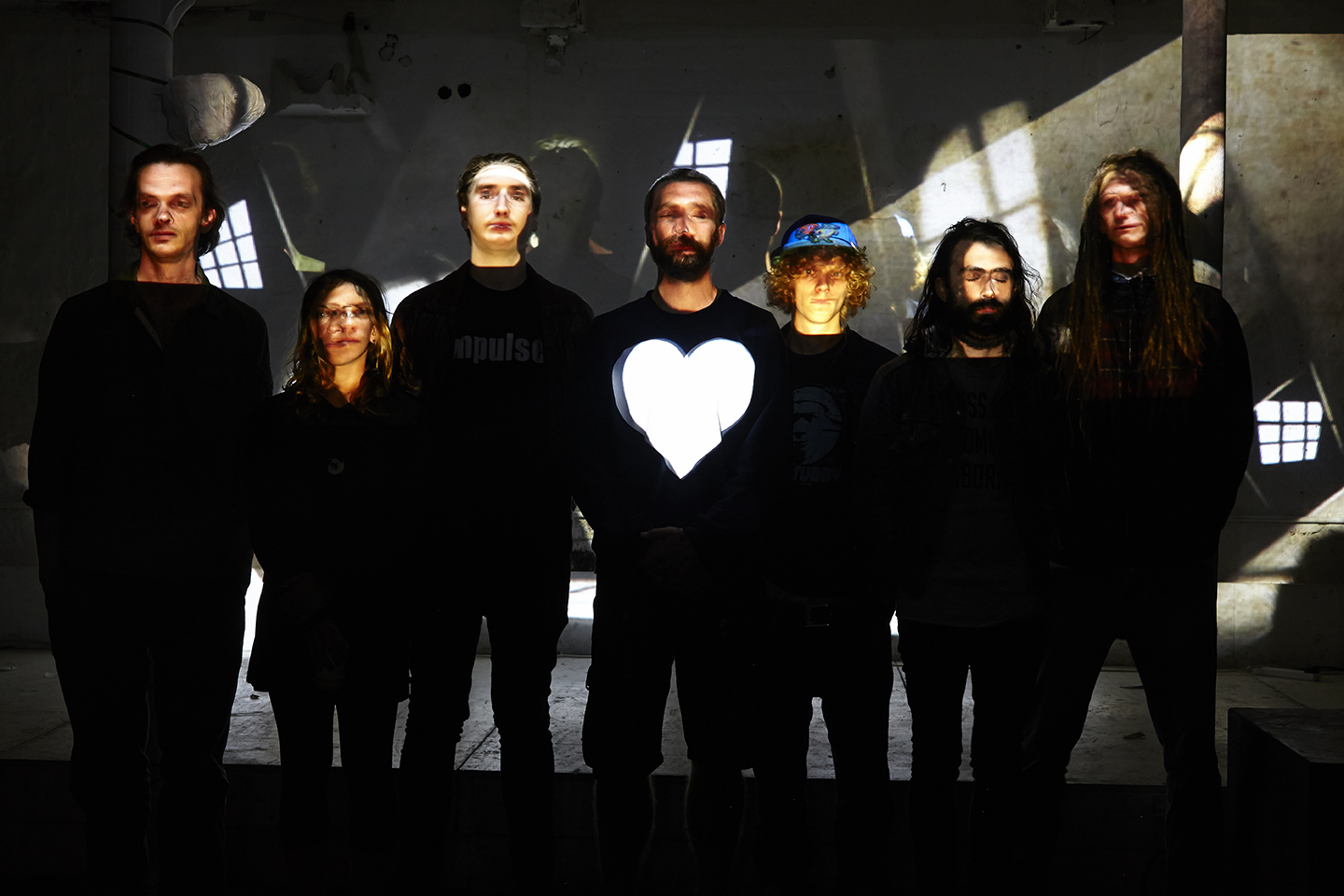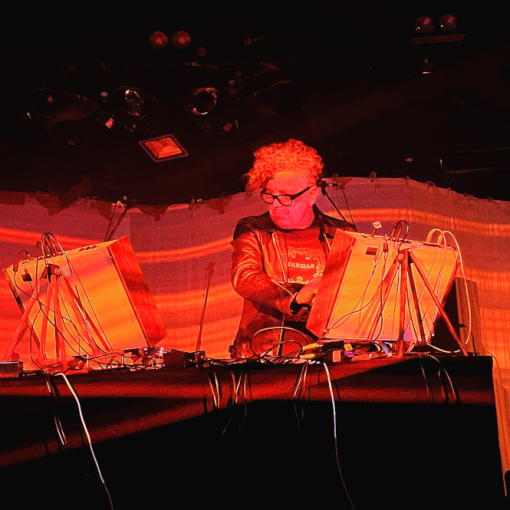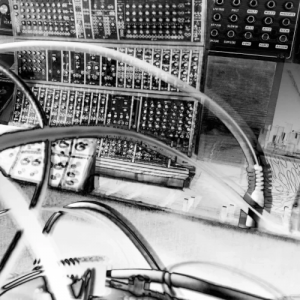 A founding member of ΕΣΣΗΜ – HELMCA (Hellenic Electroacoustic Music Composers Association), composer Stelios Giannoulakis has been making electronic music as Schema Musicalis for many years.
A founding member of ΕΣΣΗΜ – HELMCA (Hellenic Electroacoustic Music Composers Association), composer Stelios Giannoulakis has been making electronic music as Schema Musicalis for many years.
Composer, sound designer, improvising sonic artist, multi instrumentalist, music producer, creative music technology instructor, he composes for live concerts, radio, dance, theatre, multimedia and installations using electroacoustic diffusion and live electronics for his cross-genre projects and collaborations.
His session for Philippe Petit‘s Modulisme series is linked below, and he spoke to Freq about his background and practice in modular synthesis.
When did you first become aware of modular synthesis as a particular way of making music, whether as part of electronic music in general or more specifically as its own particular format, and what did you think of it at the time?
I remember watching as a kid Brian De Palma’s Phantom Of The Paradise, with that studio walled with modular synth gear in futuristic wooden fittings… I was familiar with the image of a modular synthesiser from early on, looking at records and MTV. I listened to popular groups such as Kraftwerk, Emerson Lake and Palmer, Pink Floyd, Depeche Mode and so on, but as a guitarist I was concentrating more on the physical instruments, such as guitar, bass, piano, drums, or voice.As far as the sound goes, I just understood that synths were used to make all these other sounds, using some kind of augmented keyboard, knobs and cables. Even when I got into electronic engineering I was not yet into that synth sound world, although particular sonic elements, such as the end of Black Sabbath’s “E5150”, Pink Floyd’s “On The Run” or the intro of “Baba O’Riley” stuck with me.
Around 1990, I followed a yearly seminar at ΚΣΥΜΕ – CMRC in Athens, where I was introduced to UPIC, an Akai S1000 sampler, tape editing and tape machine manipulations, the mixing desk and the studio as a modular sound design instrument, a non-functioning Synthi100 in storage, Atari with Cubase and so on. I was also introduced to early electroacoustic music. It all seemed very mysterious and exciting, but I could not really appreciate it yet. I did not understand much about this world until I went to the UK to study digital music technology and electroacoustic composition with Rajmil Fishman, Mike Vaughan and Andrew Lewis.
What was your first module or system?
On a first-generation Pentium PC I had the first Native Instruments Reactor that could barely run, but around the same time I had also the chance to interact with an original EMS Synthi A at IEMA in Athens. At Bangor University, among ProTools, field recording, and free improvisations, I found a working VCS3 which I used extensively.How long did it take for you to become accustomed to patching your own synthesizer together out of its component parts?
It is work in progress and a matter of style. I got my head around the VCS3 matrix, or the Pure Data workflow quickly enough, but to be able to improvise with a flexible set of many various devices is a different beast. With the Synthi100 also, it is a continuous process.
Do you prefer single-maker systems (for example, Buchla, Make Noise, Erica Synths, Roland, etc) or making your own modular synthesizer out of individual components form whatever manufacturer that match your needs.
The latter. My setup includes modified toys and devices, DIY oscillators, some semi-modular, and a mixer or two. The first relevant hardware I bought was a Korg Volca Modular, and then I built a Bastl Kastle, Behringer Neutron and Crave, Dreadbox Antiphon and Dysmetria, Elektron, and other random items.East Coast, West Coast or No-Coast (as Make Noise put it)? Or is it all irrelevant to how you approach synthesis?
I would say it is irrelevant, whether additive or subtractive or how the gate is filtering. I might have particular sounds in mind and try to make them happen, or might have a patching idea and want to hear how it would sound, with any devices I have in hand.Do you tend to use pure modular systems, or do you bring in outside effect and devices when playing or recording?
I like to use circuit-bent toys as sound sources through filters, as well as clock sources. I also use pre-recorded elements played from tape or an iPad.
Do you find that you record straight with no overdubbing, or do you end up multi-tracking and editing tracks in post-production?
With a large system of devices for a full set performance, I record straight and maybe edit without overdubs. But often I use less gear, or just one two pieces and multi-track. I also might use a lot of devices for say a generative soundscape and then layer something else to follow my improvisations with them. I also use synth session recordings as material for DAW composition, where I edit and layer sound objects.
Do you pre-patch your system when playing live, or do you tend to improvise on the spot?
I play with devices in separate boxes, so I patch everything on-site. I usually have a plan in mind, but end up improvising a lot for artistic or technical reasons. At home or in the studio I might make complex patches with a lot of inter-connectivity and cross-modulations or chaotic triggering setups, but playing live I like to keep my system simpler and patch along the way and operate a lot of controls by hand during performance.Which module could you not do without, or which module do you use the most in every patch?
I have circuit-bent an old toy keyboard with many potentiometers and a custom matrix of skin contacts that allows drastic changes to the sound in many dimensions. I like to use that a lot and integrate it in various ways within a network of other devices.
What do you think that can only be achieved by modular synthesis that other forms of electronic music cannot or makes harder to do?
The intimacy with sound generation it offers is of a particular kind. I mean, you get as close to engineering or programming as to spectromorphology and active listening with an interface to the sound that has physical, automatic and stochastic parameters you can control in various ways. You make your own hyper instrument while it plays on its own.You can harness it to make music in many ways, from just observing it do its thing and occasionally tuning something, to rapid playing with knobs and switches as musical performance. Also, from a compositional point of view, the concentration on one source or one process at a time and the interaction between sources and processes within a network can be used as a template for structure and inspires articulation.
Have you used various forms of software modular (eg Reaktor Blocks, Softube Modular, VCVRack) or digital hardware with modular software editors (eg Nord Modular, Axoloti, Organelle), and if so what do you think of them?
I used to play the first Reason on a Pismo PowerBook. I have used Reactor, Tassman, VAZ, Max/MSP, Pure Data, Arturia modular synth clones and other software modular. Laptop with MIDI controllers running modular instruments and environments. These days I use VCVRack for experiments and teaching, and Pure Data for various stuff. I get into TouchDesigner. I have also made an Axoloti granulator thing. Of course, the physical, or even low-tech analogue, with its tactile qualities and its creative limitations is another story. I have modular synth apps on my phone, but I don’t use them that much.
What module or system you wish you had?
I wish I had an Erica Synths Syntrx and a Syntrx II. Vernier pots and LED matrix in their VCS3 reincarnation is hot. On a different level, I would love to have a large Serge system and an old patching analogue computer.
Have you ever built a DIY module, or would you consider doing so?
I have built a few desktop synth kits and some DIY nand gate and 555 oscillator modules. I have also circuit-bent and case-modified toys, which I trigger and pitch modulate with CV. I have many schematics and plans for builds, but at the moment I try to concentrate more on the music.Which modular artist has influenced you the most in your own music?
It is difficult to answer. Bernard Parmegiani, François Bayle, Jan Jelinek, Colin Benders, Paul Pignon, Philippe Petit. Karlheinz Stockhausen‘s note downward glissando and deceleration — starting from a note and ending to a pulse train — in Kontakte (1960).
Can you hear the sound of individual modules when listening to music since you’ve been part of the modular world — how has it affected (or not) the way that you listen to music?
I can tell how particular sounds and sound behaviours were created, when they are more or less obvious. Some sounds could be made in a number of ways. It is clearly part of my enjoyment of the musical experience, I like the technical part of music in general. But when the music is good I try to forget everything and zone out.
What have you been working on lately, and do you have any upcoming releases or performances?
I have the joy to work with the EMS Synthi100, refurbished since 2017, at CMRC in Athens. I make patches and pieces with the synth strictly on its own, or open to sound input as sound exploration and composition focus. The synth becomes also part of a network with other analogue and digital setups.There have been works in a couple of directions, cumulating towards releases. I do some solo performances, lately looking into ways to put the percussive pulse back in, without getting trapped musically. I work on an upcoming performance with modular and interactive visuals with the collective Pixel Pulse in Athens. Also, we started playing again with the RSLG electroacoustic jazz trio, a great study in modular sound synthesis improvisation for me.
I have been a resident artist at Stegi Radio, with a show called The Modular Case, with electroacoustic music made on modular systems, and a new show called Sonic Abstractions with a somehow broader scope running this season.
Can you outline how you patched and performed your Modulisme session?
There are two pieces made with the Synthi100, mixed and edited from many hour sessions, without other processing. The patches themselves were networks of oscillators and filters, through envelope shapers, in generative clouds controllable with the joysticks, as well as tuned oscillator drones. A couple of pieces were made with a micro-modular setup, with circuit bent and DIY devices, 40106 oscillators, an 8-bit sampling drum machine, Monotron, Volca Modular, Antiphon, Bastl Kastle and a Behringer Neutron using sample and hold and wide range – variable wave oscillators.
One piece is using the sound of Athens city centre together with a generative patch. One piece is assembled from large variety of recorded and synthesised sounds. The VCS3 is being used to transform sound streams from noise to pitch to grain to pulse, the filter being modulated by variable LFO.Who would your dream collaborator be for a Modulisme session or otherwise?
I dreamt walking on a beach and picking up random stones, shells and pieces of wood, which I would blow into and make sound. Years later I dreamt about playing electroacoustic synthesisers with Miles Davis. I enjoy collaborating with people.
Links
